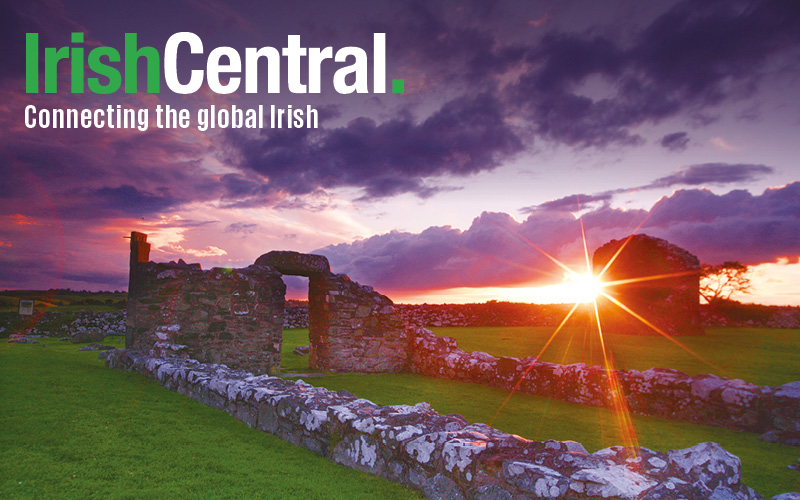The Irish government plans to buy 14-17 Moore Street in Dublin city center, the last place where the rebels held out against surrender during the 1916 Easter Rising.
No. 16 Moore Street is the building in which the rebels finally decided to surrender and abandon the rebellion.
On Tuesday, the Cabinet agreed to a proposal put forward by Heather Humphreys, Minister for Arts, Heritage and the Gaeltacht, to acquire the site and transform it into a commemorative center before the 100-year anniversary of the Easter Rising next year. The site will be purchased from the National Asset Management Agency (NAMA) for a fee believed to be around $4.3 million. NAMA is the “bad bank” body created by the Irish government in 2009 to improve the credit of the Irish economy by acquiring property development loans from Irish banks in return for government bonds.
In 2007, the Moore Street site was named a national monument, although it has since remained derelict. It will now be renovated in one of the main projects associated with the centenary.
Earlier this week, the Government announced the program for the 1916 commemoration, which will see major events take place throughout Ireland, across the US and around the world, in memory of the 1916 Easter Rising.
Concerns have arisen, however, as regards the short time span within which the site is to be renovated and relatives of the 1916 rebels have questioned whether the center will be ready in time.
Members of the Save No. 16 Moore Street group, a local campaign to save the historical site, welcomed the news, although they also voiced their concerns regarding the timeframe. John Conway, a member of the campaign, told RTÉ.ie that relatives had been told if a deal had been agreed six weeks ago, it would require 24/7 construction works to complete the project in time for the commemoration.
Patrick Cooney, of the the Save Moore Street Campaign, stated, "It has taken the government 14 years to wake up. What is needed immediately is a full architectural and archaeological assessment of the whole battlefield site."
Fianna Fáil’s spokesperson for Arts and Culture, Seán Ó Fearghaíl, responded to the purchase of the site saying, “The government has been too slow to recognize the importance of this unique part of Irish history. Restoration works should be well underway at this stage considering the 1916 centenary celebrations are just over a year away.”
The National Trust for Ireland, An Taisce, also highlighted that this is not the first time the State have acquired the building as it was also purchased by Dublin City Council in 2003.
Last November, the Council rejected a land swap deal from developers Chartered Land who have planning permission for a massive shopping center in the area. The developers had offered to build a commemorative center at 14-17 Moore Street if the Council gave them two other sites on the terrace. The Council rejected the deal as it would involve the demolition of the rest of the terrace.
Speaking about the decision to create a commemorative center at Moore Street, Minister Humphreys said, “This puts an end to the uncertainty surrounding the future of these buildings and ensures that they will be accessible to all who are interested in the history of the 1916 Rising. I hope that this project will be completed during the Centenary Year as a fitting tribute to the leaders of the Easter Rising.”
As part of the centenary program, there will be a major exhibition of 1916 archival material at the National Museum of Ireland and each school in the country will be sent a copy of the 1916 proclamation and an Irish flag (tricolor). The aim is to engage children in reflecting on events in Ireland from 1916 to 2016 and the new issues that face the country 100 years on.
Although Irish Prime Minister (Taoiseach) Enda Kenny was previously quoted as saying that a new version of the 1916 proclamation would be drafted for 2016, a Fine Gael spokesperson has since said that schoolchildren will simply write their own proclamations “based on and inspired by the existing proclamations with a view to reimagining Ireland.”
The 100-year anniversary is also to place emphasis on the role of women in the Rising in a renewed attempt to highlight the contribution of figures such as Margaret Skinnider, who was shot and injured during the Rising, and nurse Elizabeth O’Farrell, who accompanied Patrick Pearse when he surrendered.
Writing for the Irish Times this week, Minister Humphreys says, “Never again will we airbrush out the significant contribution of the women who helped us achieve our freedom.”
The Minister continued to say that as a “Protestant and an Ulster woman who is a proud Irish republican, I appreciate the need to respect the differing traditions on this island.”
“Over the past 100 years we have, I believe, grown as a nation that values and embraces our differences as a positive symbol of diversity rather than a negative source of division. In 2016 we should not be afraid to celebrate how far we have come and to challenge ourselves to consider what we want for this Republic in the future.”
Full details of the 1916 centenary and its events in the US can be seen at: www.ireland.ie.




Comments